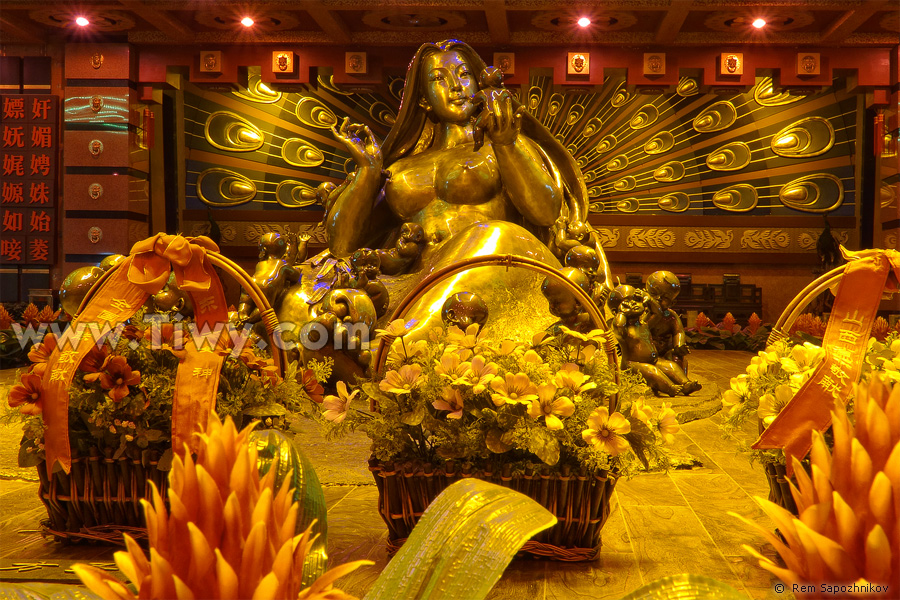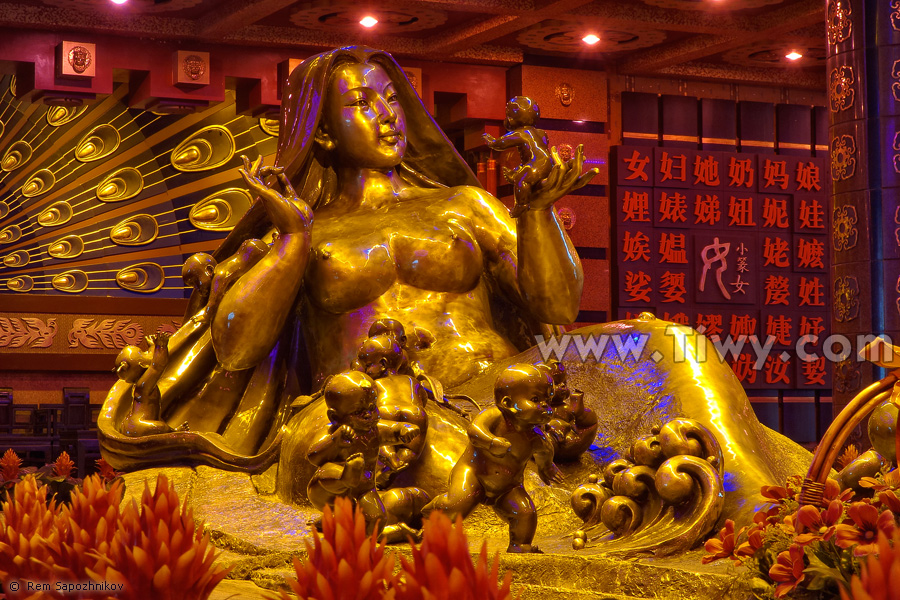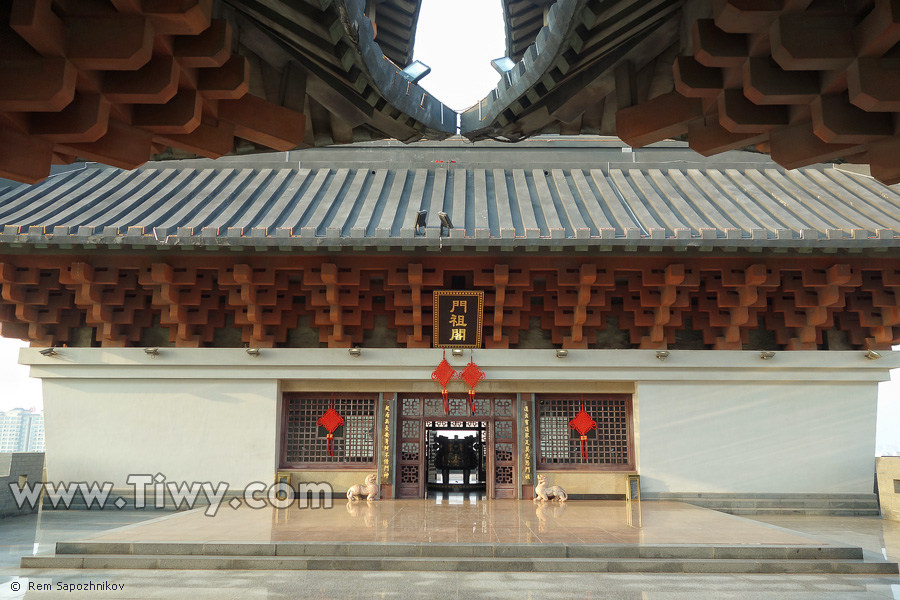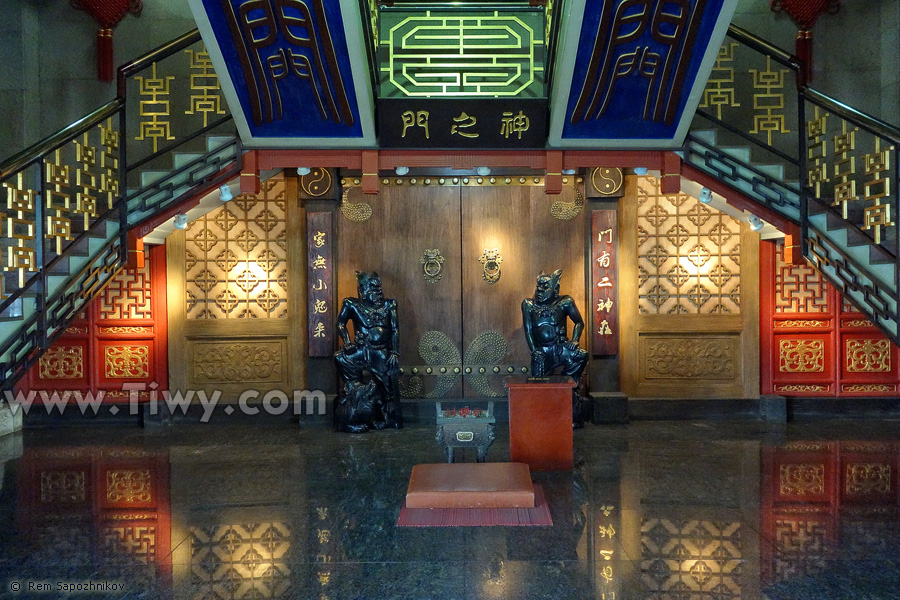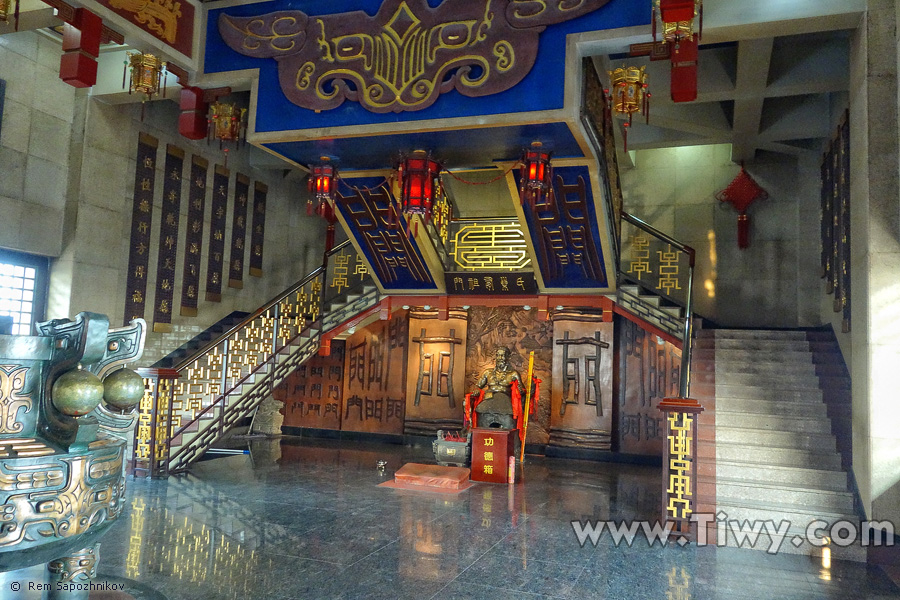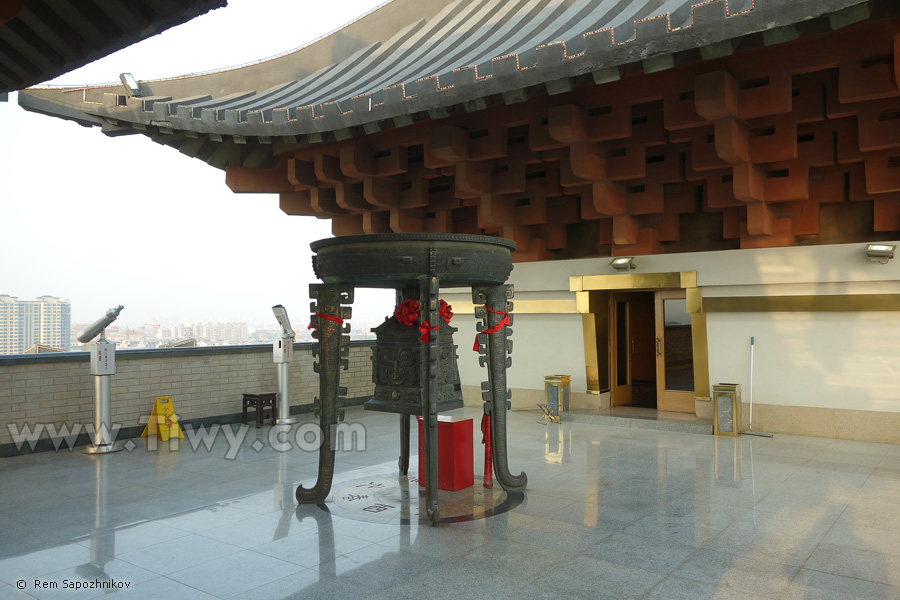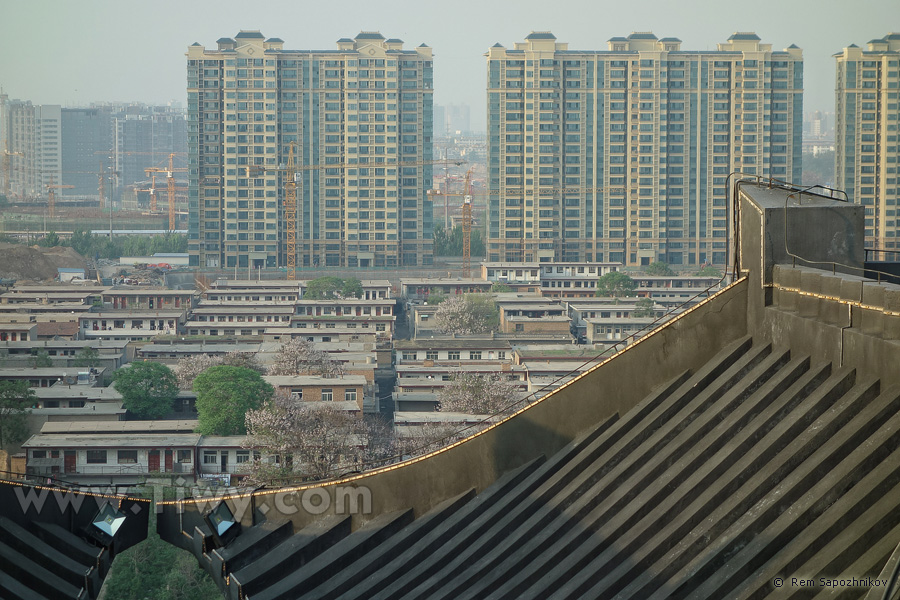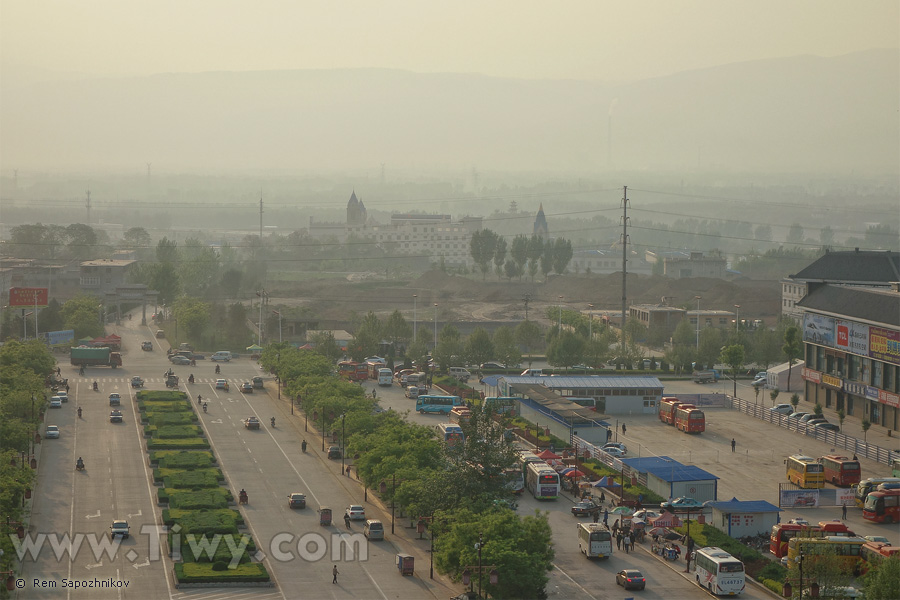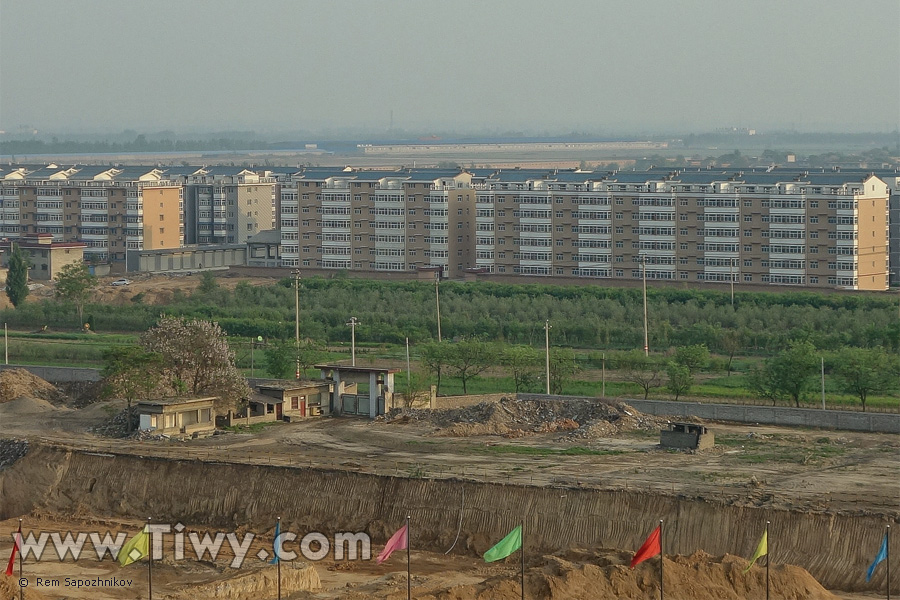Huamen Gateway (华门 - Huámen)
Huamen is the first Gateway of the Celestial Empire and the main tourist attraction in Linfen City. Here you can find a museum narrating the history of five-thousand-year-old Chinese Civilization, of its great people and their achievements, as well as of its mythological figures.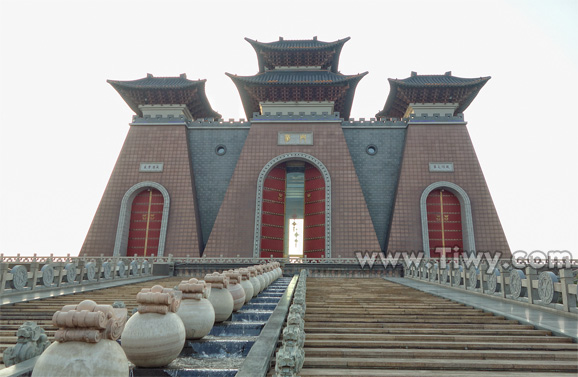
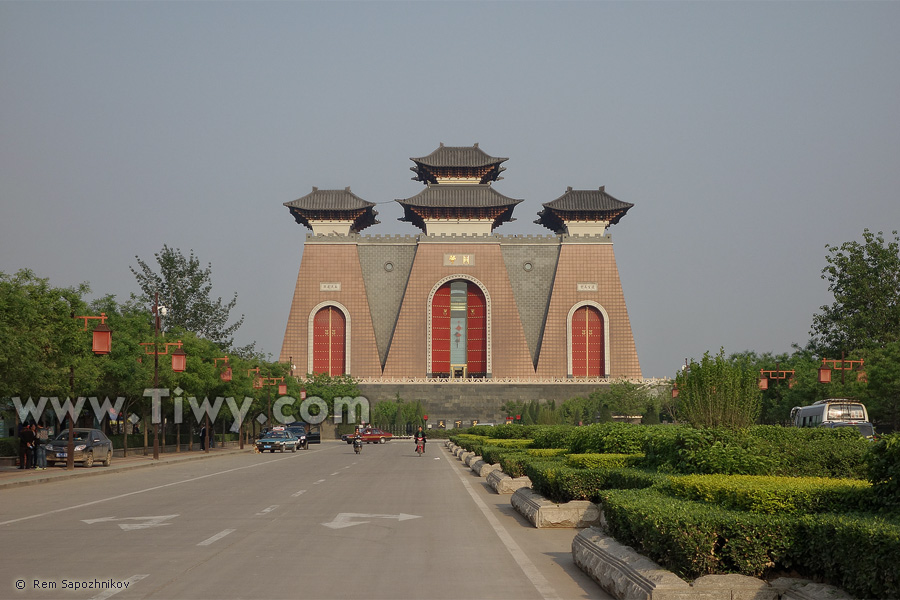
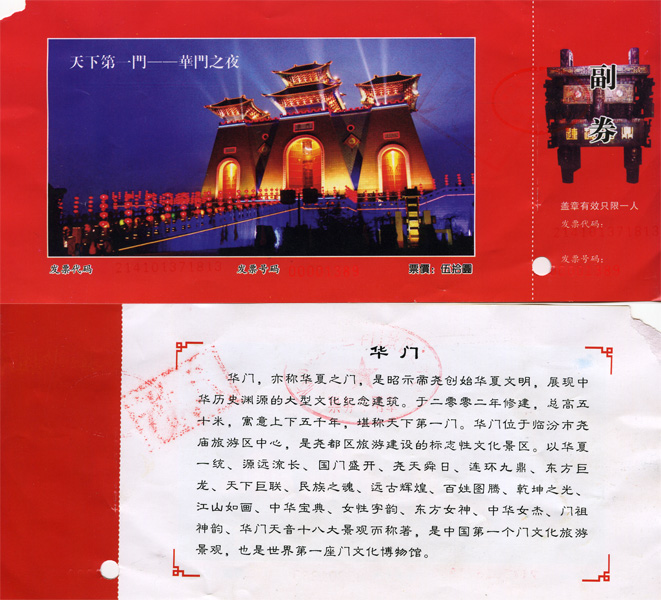
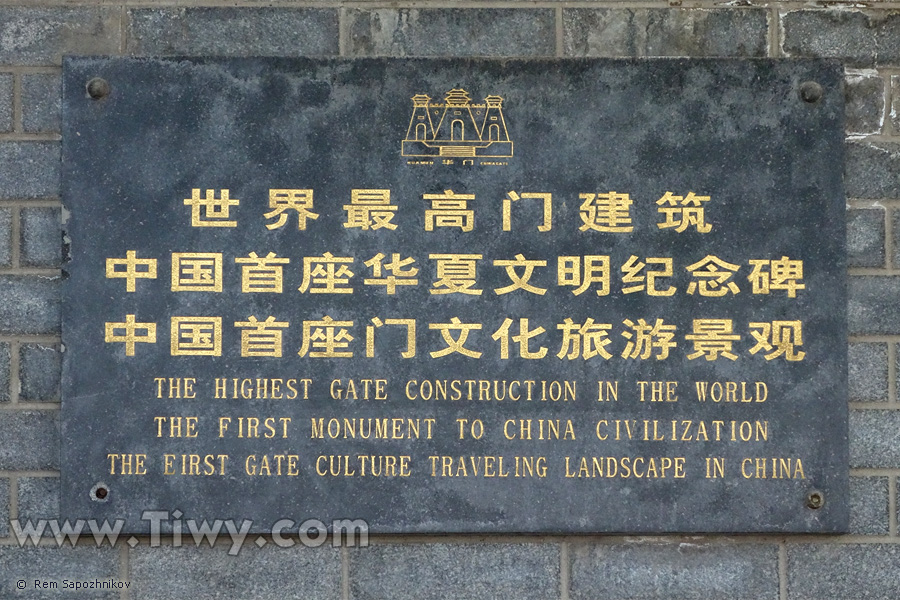
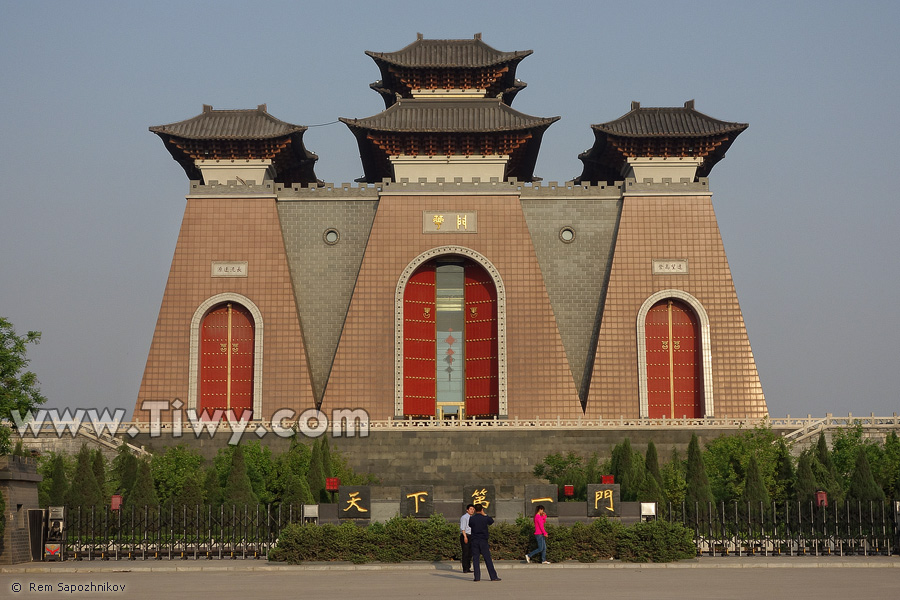
Its central door is the highest in the world with its height of 18 meters.

1 floor – The hall “China” (中华大厅 - Zhōnghuá dàtīng)
2 floor – The viewpoint overlooking the hall “China” (观景台 - Guānjǐngtái)
3 floor – The hall dedicated to the Universe /Heaven and Earth/ (乾坤大厅 - Qiánkūn dàtīng)
4 floor – The hall dedicated to heroic women (巾帼大厅 - Jīnguódàtīng)
5 floor (the last one) (顶层 - Dǐngcéng) – The gateway to the Hall of Forefathers (门祖阁 - Ménzǔgé)
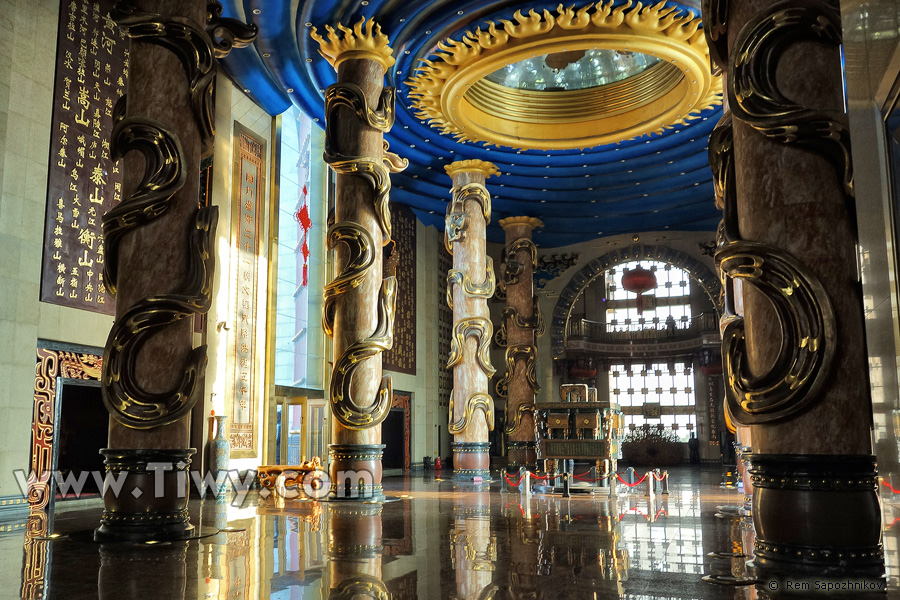
You have to be a pretty experienced sinologist to understand everything around.
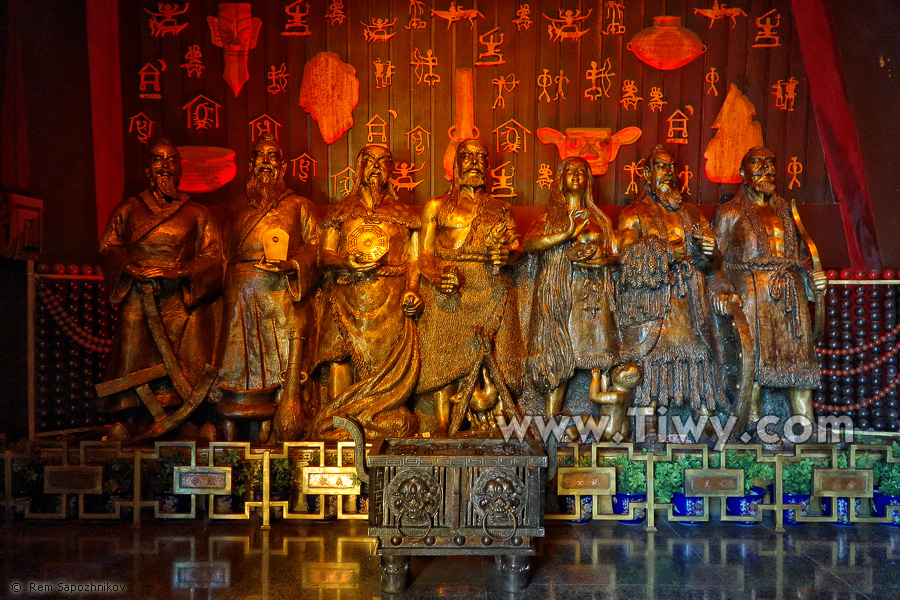
Shùn (舜), Yáo (尧), Fúxī (伏羲), Sui Ren (遂人), Nüwa (女娲), Yandi /Flame Emperor/ (炎帝), Huangdi /Yellow Emperor/ (黄帝).
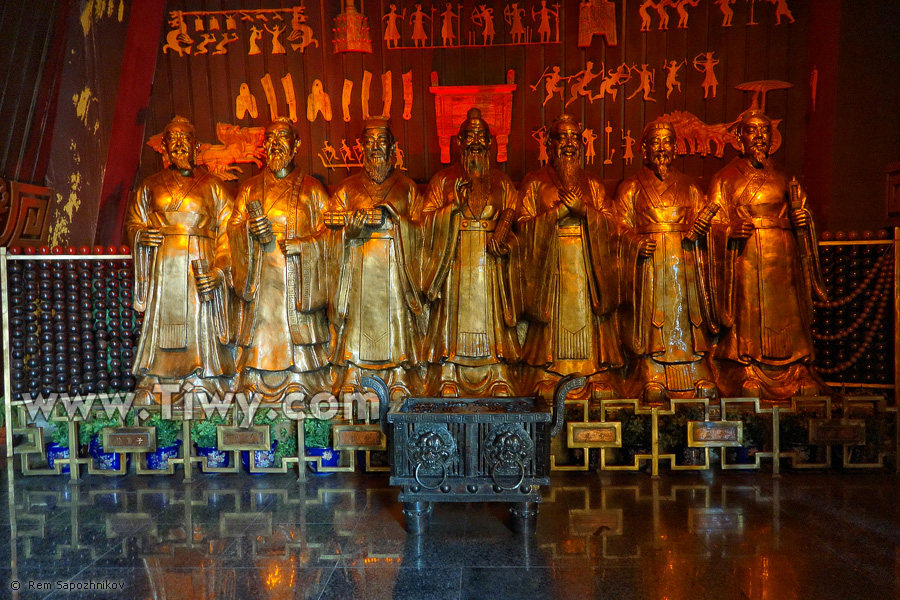
2. Xunzi (荀子), Chinese sophist within Confucian tradition (313 — 238 B.C.);
3. Mozi (墨子), ancient Chinese philosopher, opponent of Confucianism, developed the Doctrine of Universal Love (470 — 391 B.C.);
4. Laozi (老子), philosopher, well-known for his utterances and aphorisms (604 — 531 B.C.);
5. Confucius (孔子), thinker and philosopher (551 — 479 B.C.);
6. Mencius (孟子), Chinese philosopher and thinker, one of the most ambitious successors of Confucius (372 — 289 B.C.);
7. Sun Zi (孙子), thinker, the author of “Art of War”, the treatise on military strategy and politics (544 — 496 B.C.).
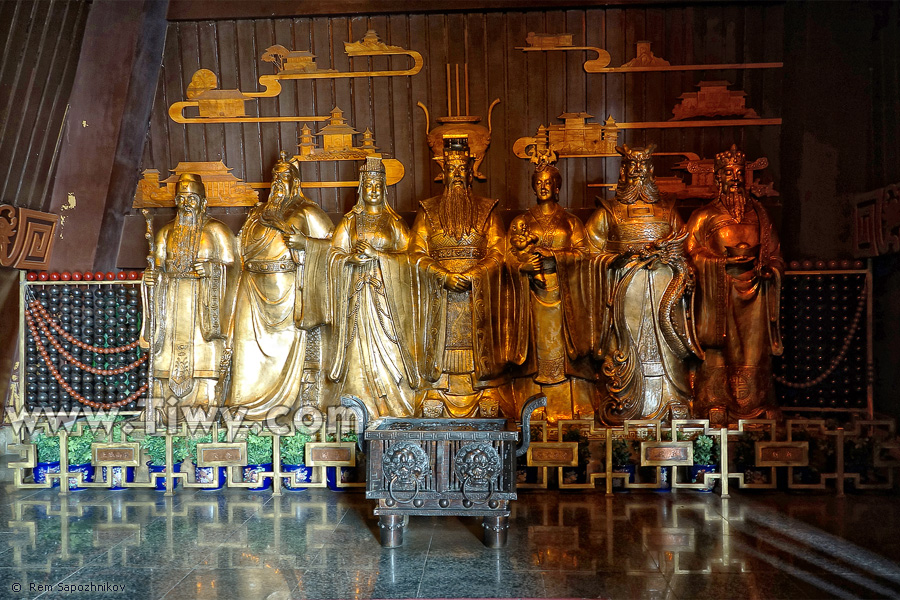
2. Guan Gong (关公) — God of War;
3. Mazu (妈祖) — Goddess of the sea, she protects sailors;
4. Yudi (玉皇大帝) — Jade Emperor, supreme deity of Taoism (aka Yu Huang Dadi);
5. Songzi Niangniang (送子娘娘) — Fertility Goddess and patron of children;
6. Longwang (龙王) — Dragon King, the ruler of the water element;
7. Cai Shen (财神) — God of prosperity.
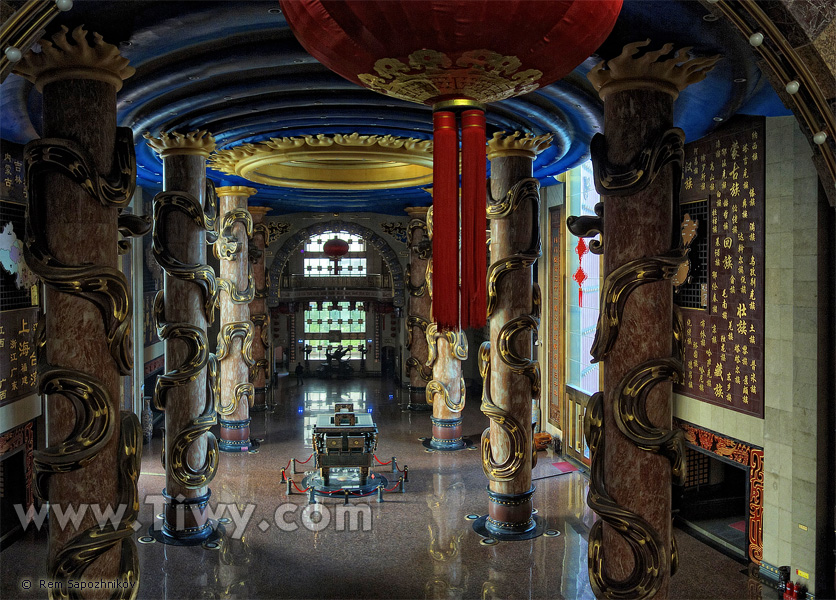
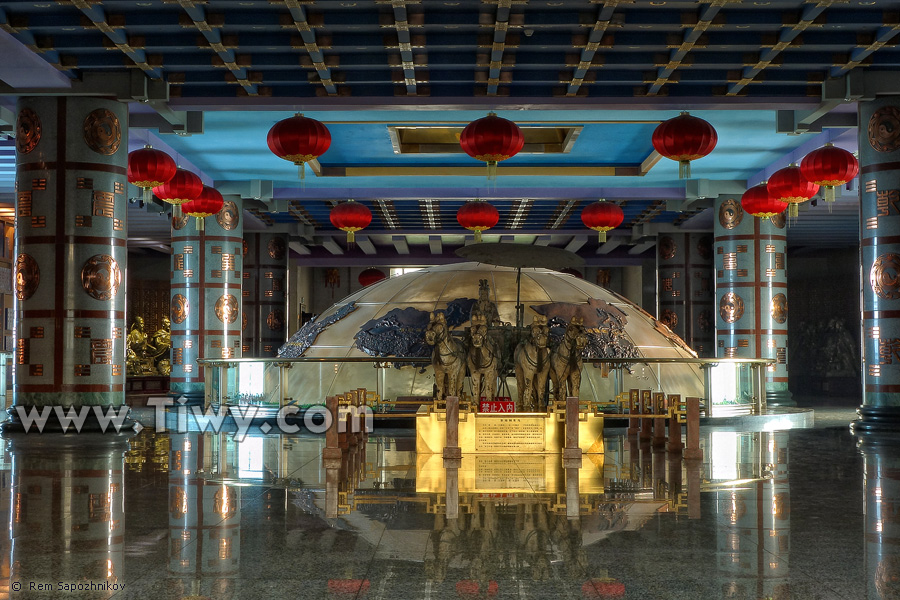
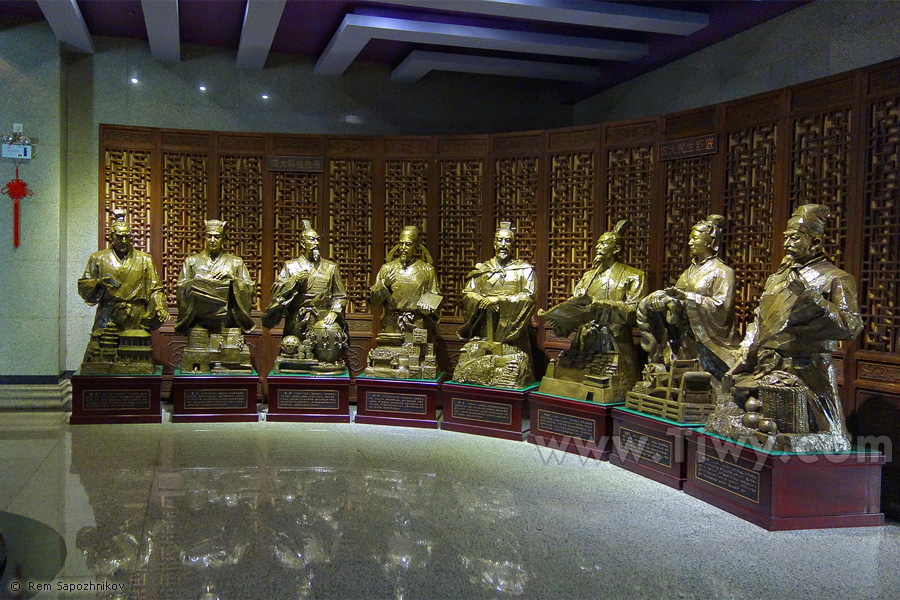
On the left there are the statues of the four founders of scientific studies (四大科技先圣 - Sì dà kējì xiānshèng).
1. Confucius (孔子 - Kǒngzǐ), world-famous Chinese philosopher (551 - 479 B.C.);
2. Sun Zi (孙子 - Sūnzǐ), author of “Art of War”, the famous treatise on military strategy (544 – 496 B.C.);
3. Qu Yuan (屈原 - Qū Yuán), Chinese poet (340 - 278 B.C.);
4. Sima Qian (司马迁 - Sīmǎ Qiān), considered being an originator of Chinese historiography (139 – 86 B.C.).
To the right of the learned scholars there are four statues of folk craftsmen (四大民生巨匠 - Sì dà mínshēng jùjiàng).
1. Lu Ban (鲁班 - Lǔ Bān), engineer, philosopher, inventor. He became a deified patron of Chinese craftsmen and builders (507 - 440 B.C.);
2. Jiasixie (贾思勰 - Jiǎsīxié), scientist of the Northern Wei Dynasty period, author of one of the oldest fundamental works on agriculture (about 544 A.D.);
3. Huang Daopo (黄道婆 - Huáng Dàopó). The indigenous people of Li on Hainan Island disclosed her the secret of cotton fabrics production, and she spread it through China (1245 - 1330 A.D.);
4. Li Shizhen (李时珍 - Lǐ Shízhēn), Chinese physician and pharmacologist. For 27 years he wrote “Treatise on Roots and Herbs” in 52 volumes (1518 - 1593 A.D.).
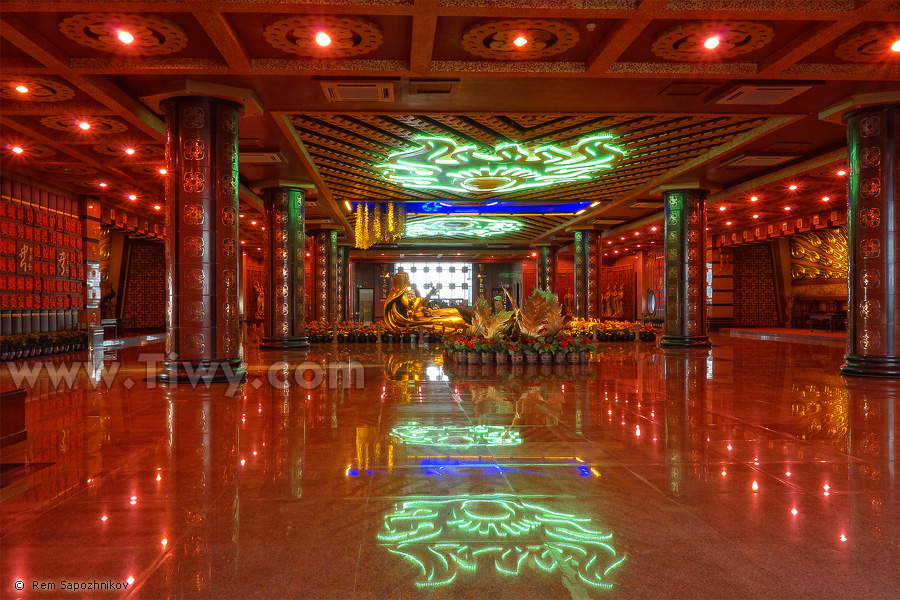
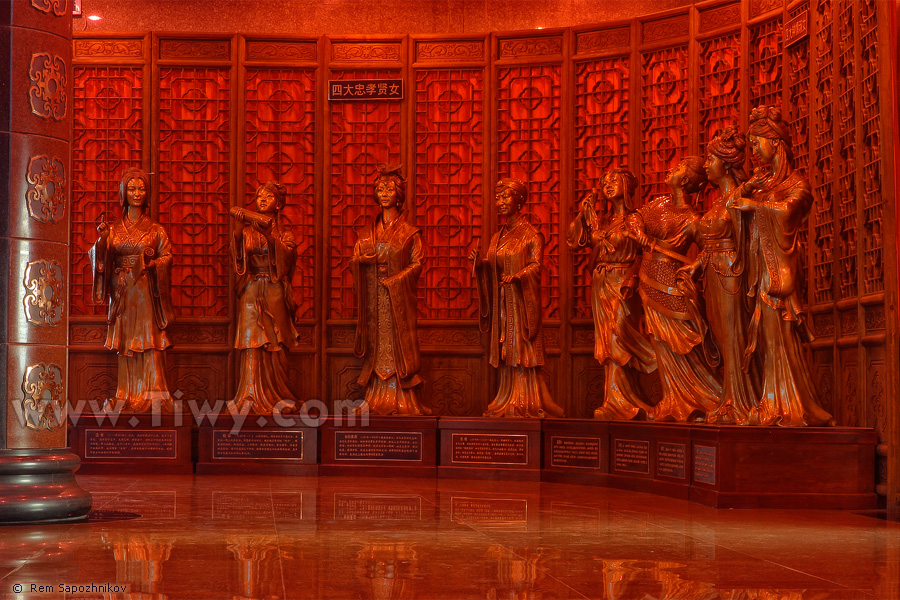
1. Mother of the philosopher Mencius (孟母);
2. Ti Ying, courageous daughter who saved her father (缇萦);
3. Empress Zhangsun (长孙皇后);
4. Mother of the national hero Yue Fei (岳母).
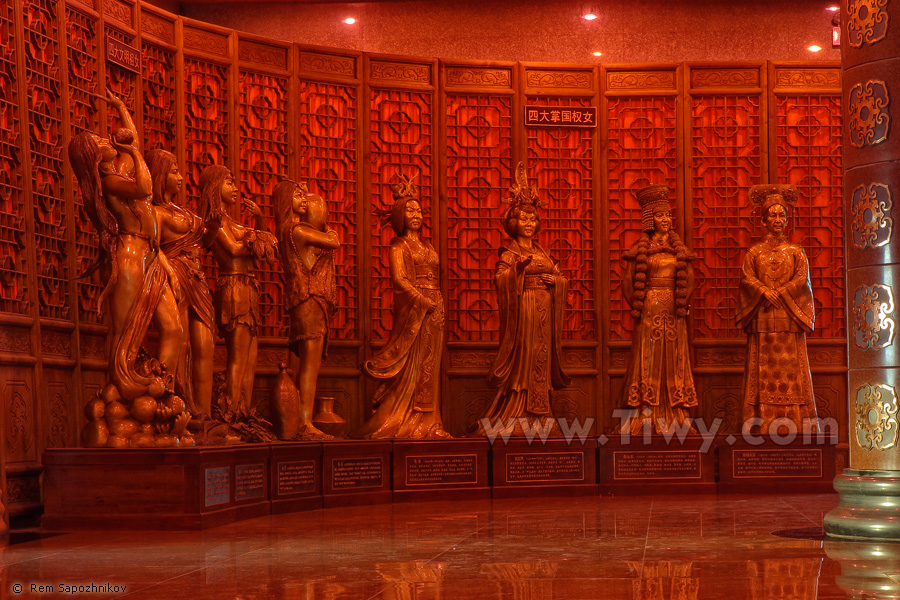
On the right there are four statues of female rulers (四大掌国权女).
1. Empress Lu Zhi (吕后);
2. Wu Zetian (武则天), concubine of the Celestial Emperor Taizong, but she actually ruled China for forty years;
3. Empress Xiao (萧太后);
4. Empress Cixi (慈禧太后).
